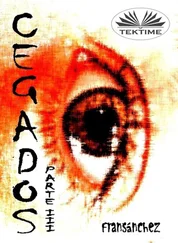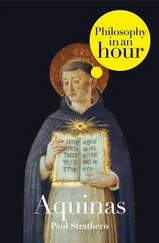Obj. 2: Further, it is said (Rom. 1:3) that Christ "was made . . . of the seed of David according to the flesh." But the seed of David was something signate in him. Therefore Christ was in David, according to something signate, and for the same reason in the other patriarchs.
Obj. 3: Further, the human race is Christ's kindred, inasmuch as He took flesh therefrom. But if that flesh were not something signate in Adam, the human race, which is descended from Adam, would seem to have no kindred with Christ: but rather with those other things from which the matter of His flesh was taken. Therefore it seems that Christ's flesh was in Adam and the other patriarchs according to something signate.
On the contrary, Augustine says (Gen. ad lit. x) that in whatever way Christ was in Adam and Abraham, other men were there also; but not conversely. But other men were not in Adam and Abraham by way of some signate matter, but only according to origin, as stated in the First Part (Q. 119, A. 1, A. 2, ad 4). Therefore neither was Christ in Adam and Abraham according to something signate; and, for the same reason, neither was He in the other patriarchs.
I answer that, As stated above (A. 5, ad 1), the matter of Christ's body was not the flesh and bones of the Blessed Virgin, nor anything that was actually a part of her body, but her blood which was her flesh potentially. Now, whatever was in the Blessed Virgin, as received from her parents, was actually a part of her body. Consequently that which the Blessed Virgin received from her parents was not the matter of Christ's body. Therefore we must say that Christ's body was not in Adam and the other patriarchs according to something signate, in the sense that some part of Adam's or of anyone else's body could be singled out and designated as the very matter from which Christ's body was to be formed: but it was there according to origin, just as was the flesh of other men. For Christ's body is related to Adam and the other patriarchs through the medium of His Mother's body. Consequently Christ's body was in the patriarchs, in no other way than was His Mother's body, which was not in the patriarchs according to signate matter: as neither were the bodies of other men, as stated in the First Part (Q. 119, A. 1, A. 2, ad 4).
Reply Obj. 1: The expression "Christ was in Adam according to bodily substance," does not mean that Christ's body was a bodily substance in Adam: but that the bodily substance of Christ's body, i.e. the matter which He took from the Virgin, was in Adam as in its active principle, but not as in its material principle: in other words, by the generative power of Adam and his descendants down to the Blessed Virgin, this matter was prepared for Christ's conception. But this matter was not fashioned into Christ's body by the seminal power derived from Adam. Therefore Christ is said to have been in Adam by way of origin, according to bodily substance: but not according to seminal virtue.
Reply Obj. 2: Although Christ's body was not in Adam and the other patriarchs, according to seminal virtue, yet the Blessed Virgin's body was thus in them, through her being conceived from the seed of a man. For this reason, through the medium of the Blessed Virgin, Christ is said to be of the seed of David, according to the flesh, by way of origin.
Reply Obj. 3: Christ and the human race are kindred, through the likeness of species. Now, specific likeness results not from remote but from proximate matter, and from the active principle which begets its like in species. Thus, then, the kinship of Christ and the human race is sufficiently preserved by His body being formed from the Virgin's blood, derived in its origin from Adam and the other patriarchs. Nor is this kinship affected by the matter whence this blood is taken, as neither is it in the generation of other men, as stated in the First Part (Q. 119, A. 2, ad 3). _______________________
SEVENTH ARTICLE [III, Q. 31, Art. 7]
Whether Christ's Flesh in the Patriarchs Was Infected by Sin?
Objection 1: It would seem that Christ's flesh was not infected by sin in the patriarchs. For it is written (Wis. 7:25) that "no defiled thing cometh into" Divine Wisdom. But Christ is the Wisdom of God according to 1 Cor. 1:24. Therefore Christ's flesh was never defiled by sin.
Obj. 2: Further, Damascene says (De Fide Orth. iii) that Christ "assumed the first-fruits of our nature." But in the primitive state human flesh was not infected by sin. Therefore Christ's flesh was not infected either in Adam or in the other patriarchs.
Obj. 3: Further, Augustine says (Gen. ad lit. x) that "human nature ever had, together with the wound, the balm with which to heal it." But that which is infected cannot heal a wound; rather does it need to be healed itself. Therefore in human nature there was ever something preserved from infection, from which afterwards Christ's body was formed.
On the contrary, Christ's body is not related to Adam and the other patriarchs, save through the medium of the Blessed Virgin's body, of whom He took flesh. But the body of the Blessed Virgin was wholly conceived in original sin, as stated above (Q. 14, A. 3, ad 1), and thus, as far as it was in the patriarchs, it was subject to sin. Therefore the flesh of Christ, as far as it was in the patriarchs, was subject to sin.
I answer that, When we say that Christ or His flesh was in Adam and the other patriarchs, we compare Him, or His flesh, to Adam and the other patriarchs. Now, it is manifest that the condition of the patriarchs differed from that of Christ: for the patriarchs were subject to sin, whereas Christ was absolutely free from sin. Consequently a twofold error may occur on this point. First, by attributing to Christ, or to His flesh, that condition which was in the patriarchs; by saying, for instance, that Christ sinned in Adam, since after some fashion He was in him. But this is false; because Christ was not in Adam in such a way that Adam's sin belonged to Christ: forasmuch as He is not descended from him according to the law of concupiscence, or according to seminal virtue; as stated above (A. 1, ad 3, A. 6, ad 1; Q. 15, A. 1, ad 2).
Secondly, error may occur by attributing the condition of Christ or of His flesh to that which was actually in the patriarchs: by saying, for instance, that, because Christ's flesh, as existing in Christ, was not subject to sin, therefore in Adam also and in the patriarchs there was some part of his body that was not subject to sin, and from which afterwards Christ's body was formed; as some indeed held. For this is quite impossible. First, because Christ's flesh was not in Adam and in the other patriarchs, according to something signate, distinguishable from the rest of his flesh, as pure from impure; as already stated (A. 6). Secondly, because since human flesh is infected by sin, through being conceived in lust, just as the entire flesh of a man is conceived through lust, so also is it entirely defiled by sin. Consequently we must say that the entire flesh of the patriarchs was subjected to sin, nor was there anything in them that was free from sin, and from which afterwards Christ's body could be formed.
Reply Obj. 1: Christ did not assume the flesh of the human race subject to sin, but cleansed from all infection of sin. Thus it is that "no defiled thing cometh into the Wisdom of God."
Reply Obj. 2: Christ is said to have assumed the first-fruits of our nature, as to the likeness of condition; forasmuch as He assumed flesh not infected by sin, like unto the flesh of man before sin. But this is not to be understood to imply a continuation of that primitive purity, as though the flesh of innocent man was preserved in its freedom from sin until the formation of Christ's body.
Reply Obj. 3: Before Christ, there was actually in human nature a wound, i.e. the infection of original sin. But the balm to heal the wound was not there actually, but only by a certain virtue of origin, forasmuch as from those patriarchs the flesh of Christ was to be propagated. _______________________
Читать дальше












